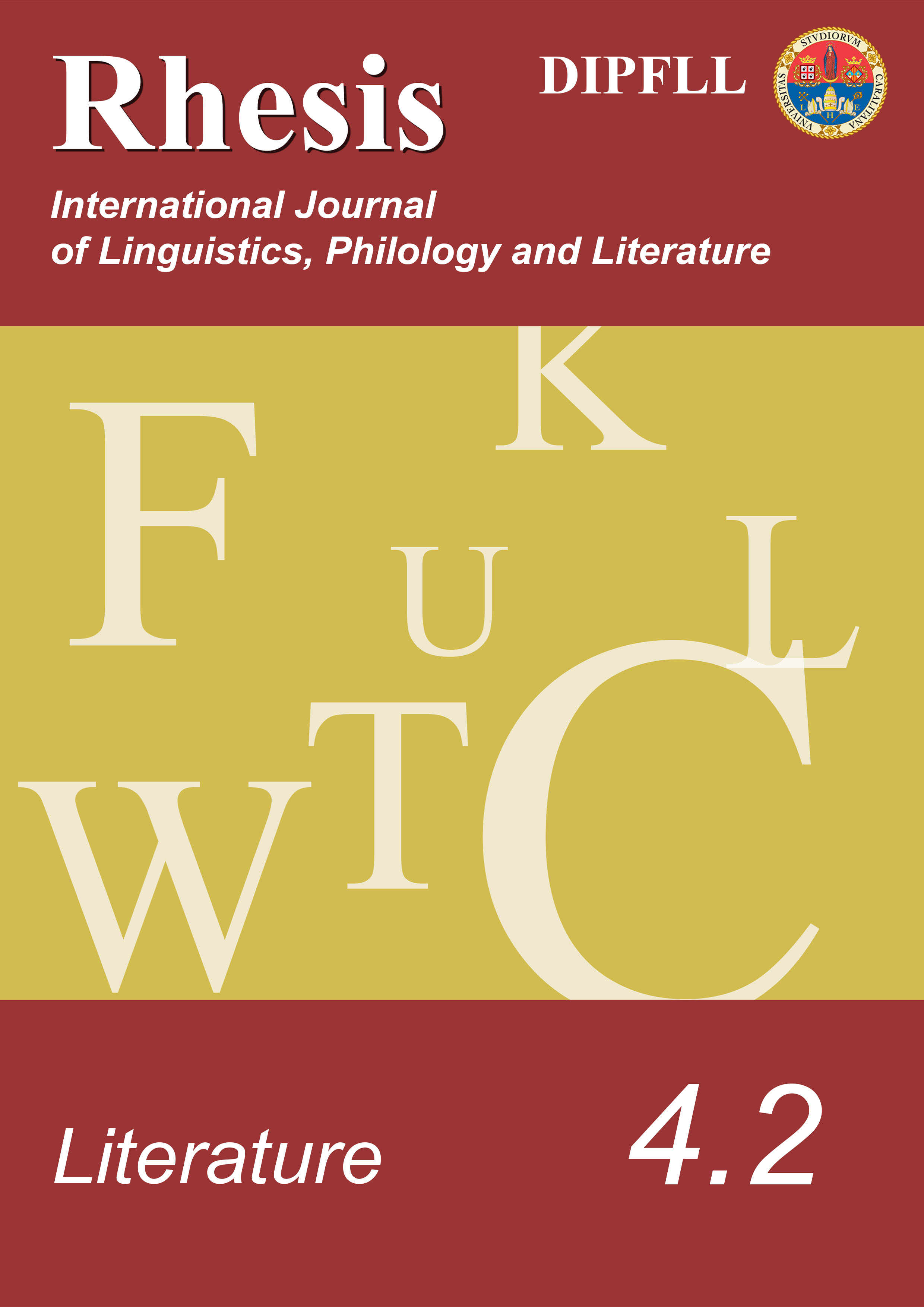Allegoria come segno e bi-sogno di cambiamento dell’uomo
Abstract
Allegory is, as already observed in antiquity (Heraclitus), an expression that says something different from what it means. This difference is linked to the origins and the development of language itself, as a factor that promotes the humanization of man in the historical development. An unveiling process - that leads, beyond the conventional form and the conventional connection between the name and the thing, to the infinite plurality of signs and meanings - is opposed to the discursive logic of rational reasoning. This vocation to the ‘ulteriority’ on the one hand approaches the allegory to the philosophical tendency looking for truth, on the other hand it shows the intimate connection with the dimension of the dream, with the philosophy of the path (Taoism) and with serendipity. In being kept in suspense between silence and speech, in saying things ‘otherwise’, in the ‘possibility’ of the impossible and in the possibility to say the ineffable, allegory gives man (a being perennially on the move and in dialogue with himself and with others) the gift of thought, opening new and unexpected horizons of meaning and change.
Downloads
References
(Sant’) Agostino, La vera religione, a cura di Onorato GRASSI, Milano, Rusconi, 1997.
BAUDRILLARD, Jean, L’altro visto da sé, trad. it di Maria Teresa CARBONE, Genova, Costa & Nolan, 1987.
BENJAMIN, Walter, Sulla lingua in generale e sulla lingua dell’uomo (1916), in Walter BENJAMIN, Angelus novus. Saggi e frammenti, a cura di Renato SOLMI, Torino, Einaudi, 1995, pp. 53-70.
BENJAMIN, Walter, Sul concetto di storia, a cura di Gianfranco BONOLA e Michele RANCHETTI, Torino, Einaudi, 1997.
BIANCHI, Enzo, Quando credenti e non credenti cercano insieme la verità, in Papa FRANCESCO, Eugenio SCALFARI, Dialogo tra credenti e non credenti, Torino- Roma, Einaudi-la Repubblica, 2013, pp. 109-116.
BLUMENBERG, Hans, Tempo della vita e tempo del mondo, Bologna, il Mulino, 1996.
BODEI, Remo, La vita delle cose, Roma-Bari, Laterza, 2009.
BRUNO, Giordano, Le ombre delle idee, trad. it. di Antonio CAIAZZA e presentazione di Carlo SINI, Milano, Spirali, 1988.
BUBER, Martin, Il cammino dell’uomo, Magnano, Qiqajon, 1990.
CALDERON DE LA BARCA, Pedro, La vita è sogno, Milano, Adelphi, 2002 (8a ed.).
DELEUZE, Gilles, La piega. Leibniz e il Barocco, a cura di Davide TARIZZO, Torino, Einaudi, 2004.
DERRIDA, Jacques, Il sogno di Benjamin, trad. it. Graziella BERTO, Milano, Bompiani, 2003.
ECO, Umberto, La struttura assente. La ricerca semiotica e il metodo strutturale, Milano, Bompiani, 2002.
GABLIK, Suzi, Magritte, London, Thames and Hudson, 1970.
GREBLO, Edoardo, “Benjamin, immagine e scrittura”, «Aut-Aut», 259 (1994), pp. 55-64.
HEIDEGGER, Martin, In cammino verso il linguaggio, a cura di Alberto CARACCIOLO, Milano, Mursia, 1990.
HEGEL, Georg Wilhelm Friedrich, Detti memorabili di un filosofo, a cura di Nicolao MERKER, Roma, Editori Riuniti, 1986.
KANT, Immanuel, Di un tono di distinzione assunto di recente in filosofia, in Immanuel KANT, Questioni di confine. Saggi polemici (1786-1800), a cura di Fabrizio DESIDERI, Genova, Marietti, 1980.
Lao TZE, Tao Tê Ching. La via in cammino, trad. it. di Luciano PARINETTO, Milano, Rusconi, 1999.
LÉVI-STRAUSS, Claude, Mito e significato. L’antropologia in cinque lezioni, Milano, Il Saggiatore (Net), 2002.
LUKÁCS, György, Estetica, trad. it. di Fausto CODINO, vol. 2, Torino, Einaudi, 1970. MOLINU, Nino Cornelio, “Ermeneutica e odologia”, «Annali della Facoltà di Lettere e Filosofia dell’Università di Cagliari», N.S. XXIV, 61 (2006), pp. 391-422.
MUSIL, Robert, Die Verwirrungen des Zöglings Törless, trad. it. di Giorgio ZAMPA, Il giovane Törless, Milano, Rizzoli, 1974.
ORTEGA Y GASSET, José, Que es filosofia?, trad. it. a cura di Armando SAVIGNANO, Cos’è filosofia?, Genova, Marietti, 1994.
SAVATER, Fernando, Dizionario filosofico, Roma-Bari, Laterza, 1996.
SCHMITT, Carl, Nomos-Nahme-Name (1959), trad. it. in Caterina RESTA, Stato mondiale o nomos della terra. Carl Schmitt tra universo e pluriverso, Roma, Pellicani ed., 1999, pp. 107-131.
SOLNIT, Rebecca, Storia del camminare, Milano, Mondadori, 2005.
STEINER, George, Linguaggio e silenzio. Saggi sul linguaggio, la letteratura e l’inumano, trad. it. Ruggero BIANCHI, Milano, Garzanti, 2006.



